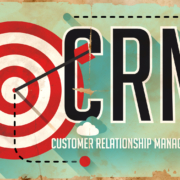Senior Living Website Audits: 6 Signs You Need One
Most marketing and sales teams understand the benefits of a senior living website audit. The question, however, is this: When should you conduct one? Here are six signs that it’s time.
1. You haven’t done one since . . . ?
Ideally, you should audit your online presence at least once a year. (In addition to assessing your website, you should review your social media, Google My Business listings, and the overall competitive landscape.) If you can’t remember the last time your team has done any of this, schedule an audit ASAP.
2. You suspect something’s broken, but you’re not sure what.
Have you ever driven a car and it’s made a weird sound? You know something is off—or possibly even broken—but you don’t know what it is. The same thing can happen with senior living websites.
Maybe you’ve encountered a broken link on your site, and now you’re suddenly wondering how many other broken links exist. Or maybe a prospect mentions they had trouble submitting a form. Or perhaps you’re seeing a drop in traffic and you’re wondering about SEO.
Schedule an audit! After all, you get your car oil changes, tune-ups, and multi-point inspections, right? You should do the same with your website.
3. People complain about your site.
This goes hand-in-hand with the previous point. Maybe you’ve been hearing more complaints, like the site is slow. The opt-in forms don’t work. The navigation is confusing. Or the content is full of typos and just plain unhelpful.
If you’re hearing more complaints in general—either directly from prospects or from review sites—pay attention. Even more so if the complaints consistently gripe about the same issues. All are signs that it’s time to schedule a website audit so you can see what’s what.
4. Your senior living website isn’t delivering the ROI you’re looking for.
Remember, your senior living website should attract targeted traffic and convert that traffic into bona fide leads—leads that ultimately book tours and become move-ins. If your site isn’t consistently doing this, it’s failing you.
How to perform a quick gut check? Ask yourself if any of the following sounds familiar:
- Your traffic numbers are down and/or they’re not what you think they should be.
- You have zero visibility on important search terms, particularly relevant location-based search terms.
- Your competitors’ websites and/or search presence is much better than yours.
- You have decent traffic but lousy conversions.
- You convert people into leads, but you’re having a hard time getting them to convert again and move further down the sales funnel.
- Your core website pages have a high bounce rate.
If you answered yes to one or more of the above, it’s time for a senior living website audit.
5. You want to refresh or redesign your senior living website, but you don’t know where to begin.
Even if you know where to begin, take a step back and perform an objective audit of where your site is today. An audit is a smart and cost-effective way to get a sense of what’s working, what isn’t, what you should “take with you” (to a new platform, for example), and what you need to do differently.
An audit might even convince you that you don’t need to make as big of a change as you were originally anticipating. Plus, having a baseline will also make it easier to measure how well the refreshed website performs in comparison to the current one.
6. Your team is too close to it.
We’ve all been there where we’re too close to something to see what’s really going on. This is especially true with websites. You stop “seeing” the look and feel or what’s broken (or what’s working).
Or the opposite can happen as well. Because you spend so much time on the site, day in and day out, it’s tempting to think you need to change things up simply because you’re getting bored. The reality might be that the site is fine “as is.” An objective third-party website audit can provide an honest and fair assessment.












